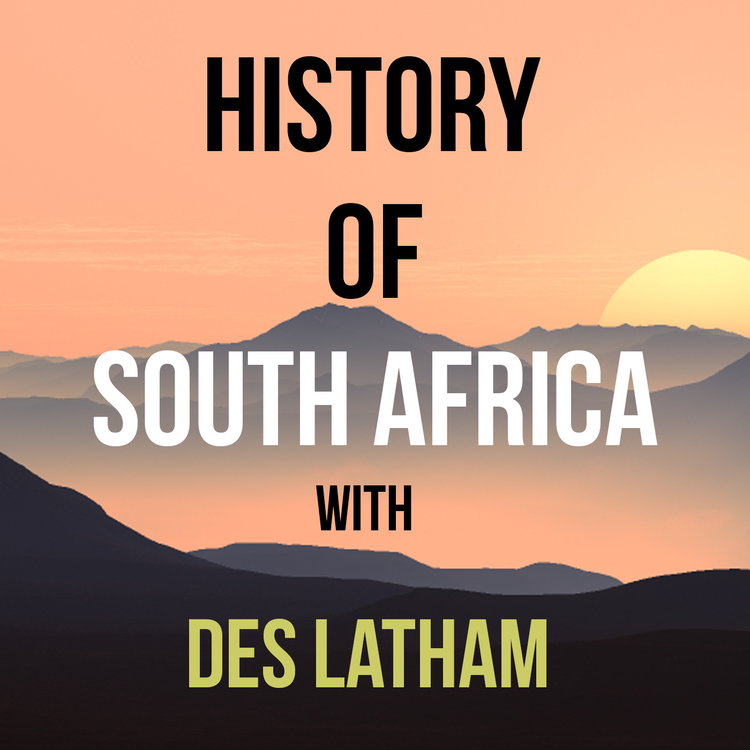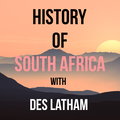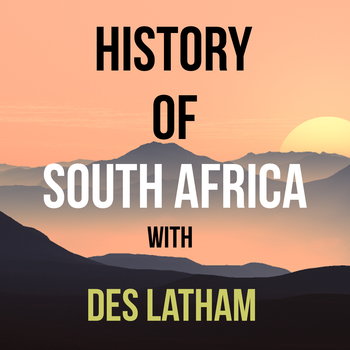
Episode 94 – White and black ants in Botswana and Eastern Cape secession
Loading player...
Port Natal and Delagoa Bay are far away from Cape Town and appeared even further in the early 1820s. The Cape Governor was inevitably more concerned with what lay immediately beyond the colonial frontiers than in these distant ports.
Much of what concerned Lord Charles Somerset – and had concerned his predecessors – already lay along the frontiers. The colony had thrown out an ever increasing fringe of loose cannons, skirmishers, traders, trek-boers, escaped slaves, and even rebellious missionaries.
The flood of missionaries turned into a tsunami by the mid-1820s, the London Missionary Society was already at work as you know, and by now they were established along both sides of the Orange River and into the eastern Frontier.
The Moravians had arrived and were carving out new parishers even further east, while the Wesleyans were already amongst the far-distant amaPondo people. The Zulu had been raiding these people from Shaka’s centre of power as you know.
There were a number of Scots from Glasgow who found living amongst the amaXhosa to their liking, and even missionaries from Germany showed up, particularly from Berlin, and they began living amongst the amaXhosa too.
The Rhenish and Paris Evangelicals arrived too, one to work within the colony and the other headed north into Bechuanaland, and then to the Basutho.
The LMS and Paris Evangelicals were moving along the first stage of what became known as the Missionary Road which led all the way from the Cape into Central Africa.
By now the chiefdoms of the Caledon Valley and the open plains north of the Orange River had been squeezed between three expanding zones of instability and conflict.
From the south and south west parties of Griqua, Kora and Boers were raiding for cattle and cheap labour. To the northwest, the rivalries of Batswana chiefdoms were spilling across the Vaal River. To the East, the fighting that had seen the AmaZulu and amaNdwandwe at war, as well as the amaMthethwa, had displaced groups as you’ve heard and some had headed across the Drakensberg.
Then Lord Bathurst the Secretary of State set up an Advisory Council in Cape Town which consisted of the Governor, muttering under his bewigged breath, the Chief Justice, the colonial Secretary, the Officer commanding, the Deputy-Quartermaster-General, the Auditor General and the Treasurer.
The Council was to deal with quite an interesting proposal, and this was allowing the Eastern Cape to be represented by their own council, by some kind of representative assembly. They fired the first round in what was to become a long-sustained but ultimately unsuccessful battle for separation by Eastern Capers.
Much of what concerned Lord Charles Somerset – and had concerned his predecessors – already lay along the frontiers. The colony had thrown out an ever increasing fringe of loose cannons, skirmishers, traders, trek-boers, escaped slaves, and even rebellious missionaries.
The flood of missionaries turned into a tsunami by the mid-1820s, the London Missionary Society was already at work as you know, and by now they were established along both sides of the Orange River and into the eastern Frontier.
The Moravians had arrived and were carving out new parishers even further east, while the Wesleyans were already amongst the far-distant amaPondo people. The Zulu had been raiding these people from Shaka’s centre of power as you know.
There were a number of Scots from Glasgow who found living amongst the amaXhosa to their liking, and even missionaries from Germany showed up, particularly from Berlin, and they began living amongst the amaXhosa too.
The Rhenish and Paris Evangelicals arrived too, one to work within the colony and the other headed north into Bechuanaland, and then to the Basutho.
The LMS and Paris Evangelicals were moving along the first stage of what became known as the Missionary Road which led all the way from the Cape into Central Africa.
By now the chiefdoms of the Caledon Valley and the open plains north of the Orange River had been squeezed between three expanding zones of instability and conflict.
From the south and south west parties of Griqua, Kora and Boers were raiding for cattle and cheap labour. To the northwest, the rivalries of Batswana chiefdoms were spilling across the Vaal River. To the East, the fighting that had seen the AmaZulu and amaNdwandwe at war, as well as the amaMthethwa, had displaced groups as you’ve heard and some had headed across the Drakensberg.
Then Lord Bathurst the Secretary of State set up an Advisory Council in Cape Town which consisted of the Governor, muttering under his bewigged breath, the Chief Justice, the colonial Secretary, the Officer commanding, the Deputy-Quartermaster-General, the Auditor General and the Treasurer.
The Council was to deal with quite an interesting proposal, and this was allowing the Eastern Cape to be represented by their own council, by some kind of representative assembly. They fired the first round in what was to become a long-sustained but ultimately unsuccessful battle for separation by Eastern Capers.

